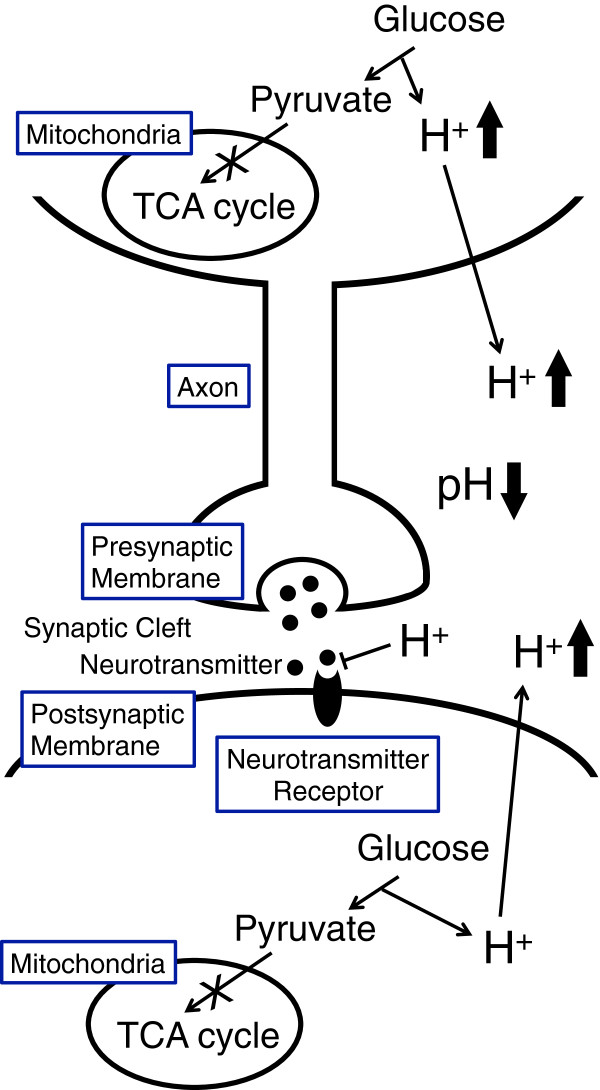Figure 2.

The potential molecular mechanism of pH-dependent regulation of neural cell function in diabetes mellitus with mitochondria dysfunction. Neural cells with mitochondria dysfunction synthesize ATP required for maintenance of neural cell function only or mainly via glycolysis, producing much larger amounts of H+ than neural cells with normal function of mitochondria synthesizing ATP via TCA cycle. This large amount of H+ produced by glycolysis in neural cells with dysfunction of mitochondria is released to the extracellular space (interstitial fluid) including the synaptic cleft. This phenomenon results in lowered pH of the extracellular space (interstitial fluid) including the synaptic cleft. Activity of neural cells at lowered pH of the extracellular space (interstitial fluid) is kept low due to a low level of synaptic neurotransmission signals via low binding affinity of neurotransmitters to their receptors. Namely, the amount of neurotransmitters released into the synaptic cleft, which is large enough for generation of action potential under conditions with normal function of mitochondria, is insufficient for generating action potential under lowered pH conditions due to low binding affinity of neurotransmitters to their receptors.
